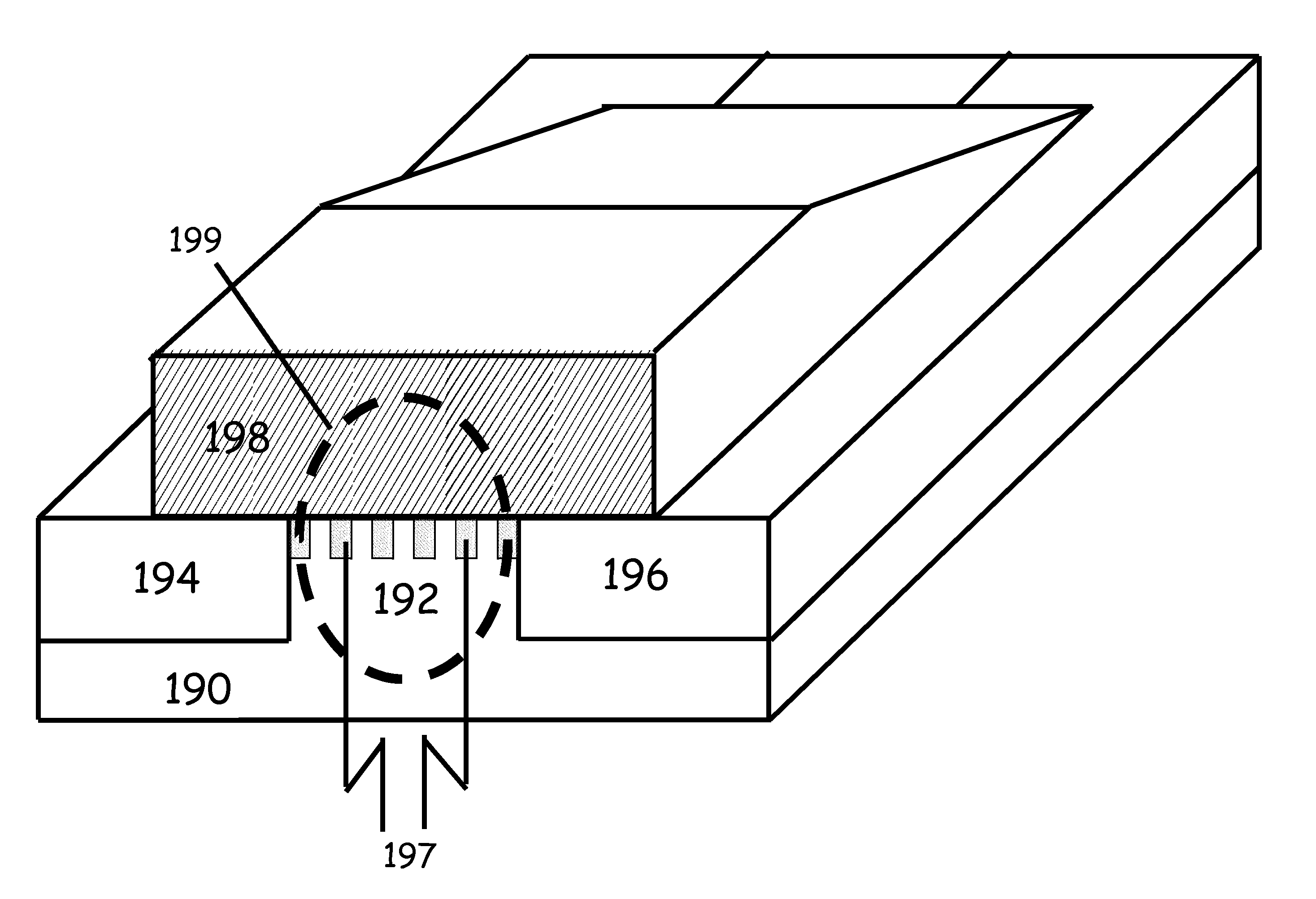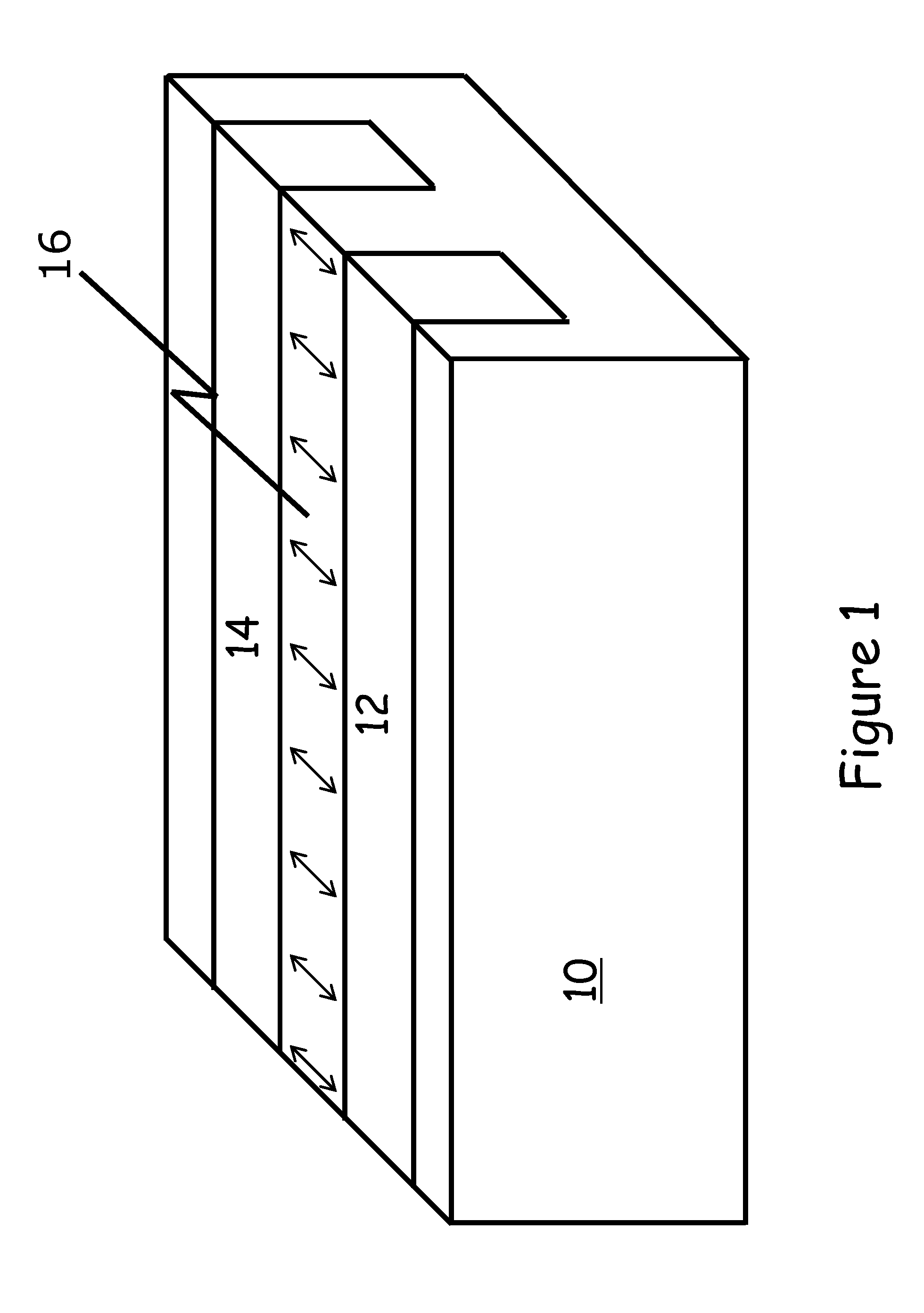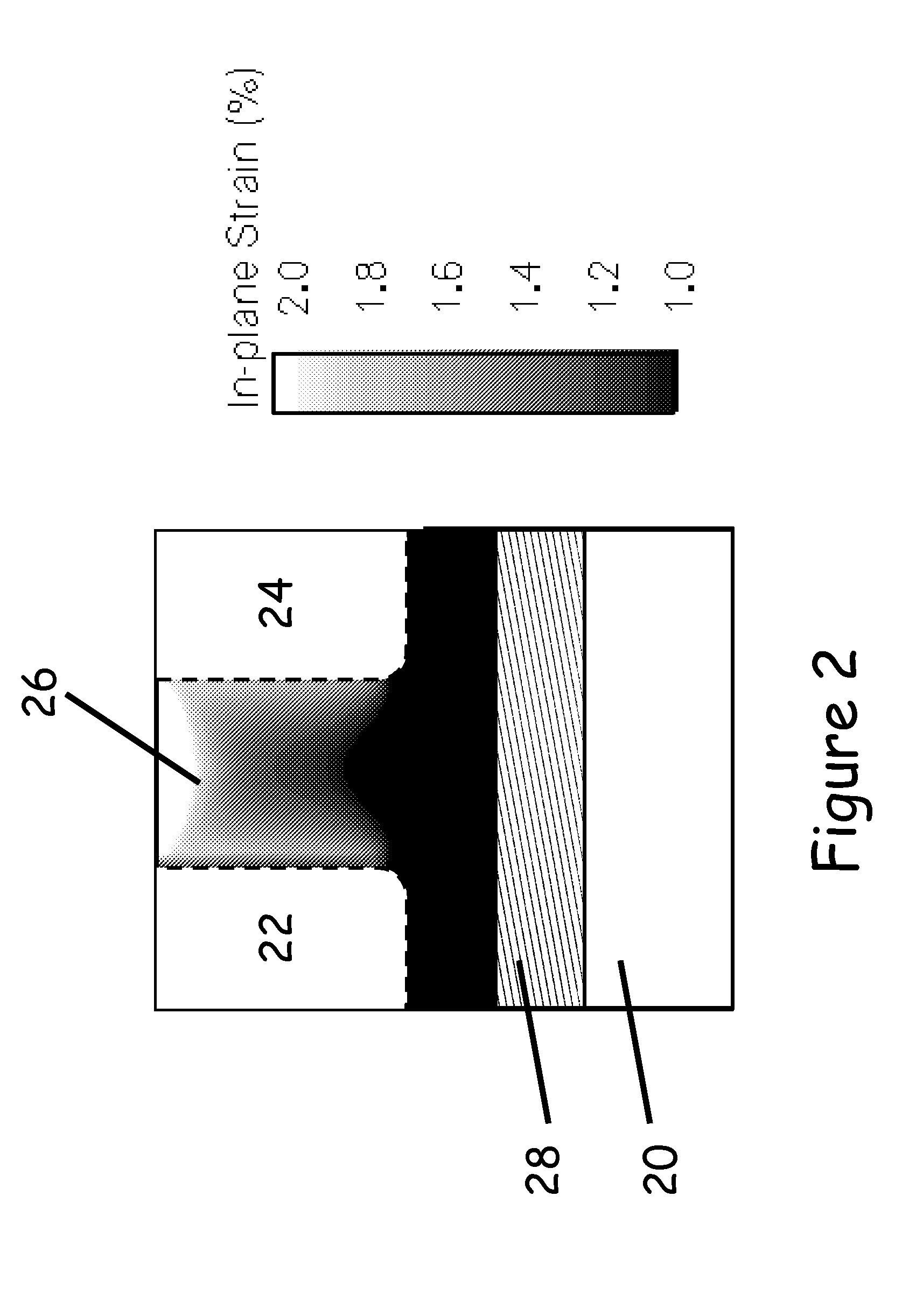Tensile strained semiconductor photon emission and detection devices and integrated photonics system
a technology of semiconductor photon emission and detection device, applied in the field of optical systems, can solve the problems of low efficiency of light emission using the raman effect, difficult on-chip light emission, and inefficient materials for ligh
- Summary
- Abstract
- Description
- Claims
- Application Information
AI Technical Summary
Benefits of technology
Problems solved by technology
Method used
Image
Examples
Embodiment Construction
[0017]An aspect of the present invention provides an optical device having a germanium region in contact with a plurality of stressor regions. The plurality of stressor regions induces tensile strain within the germanium region. The tensile strain in at least a portion of the germanium region is sufficient to cause a portion of the germanium region to have a direct band gap. A junction is positioned in or adjacent the portion of the germanium region, the junction having a first side with a first majority carrier type and a second side with a second majority carrier type. First and second contacts are respectively coupled to the first side of the junction and the second side of the junction.
[0018]According to another aspect of the present invention, an optical device comprises first and second germanium regions. The first germanium region is in contact with a first tensile stressor so that the first germanium region has biaxial tensile strain in at least a first portion of the first ...
PUM
| Property | Measurement | Unit |
|---|---|---|
| thickness | aaaaa | aaaaa |
| thickness | aaaaa | aaaaa |
| width | aaaaa | aaaaa |
Abstract
Description
Claims
Application Information
 Login to View More
Login to View More - R&D
- Intellectual Property
- Life Sciences
- Materials
- Tech Scout
- Unparalleled Data Quality
- Higher Quality Content
- 60% Fewer Hallucinations
Browse by: Latest US Patents, China's latest patents, Technical Efficacy Thesaurus, Application Domain, Technology Topic, Popular Technical Reports.
© 2025 PatSnap. All rights reserved.Legal|Privacy policy|Modern Slavery Act Transparency Statement|Sitemap|About US| Contact US: help@patsnap.com



